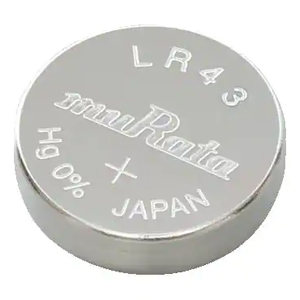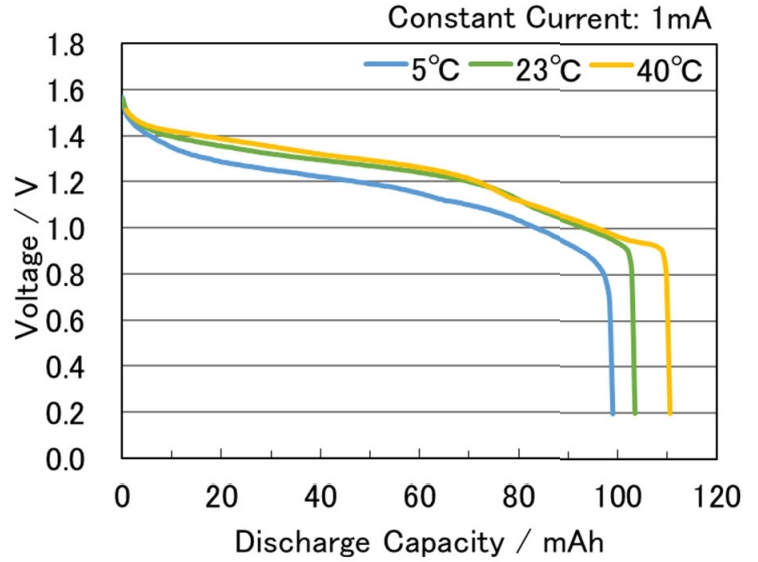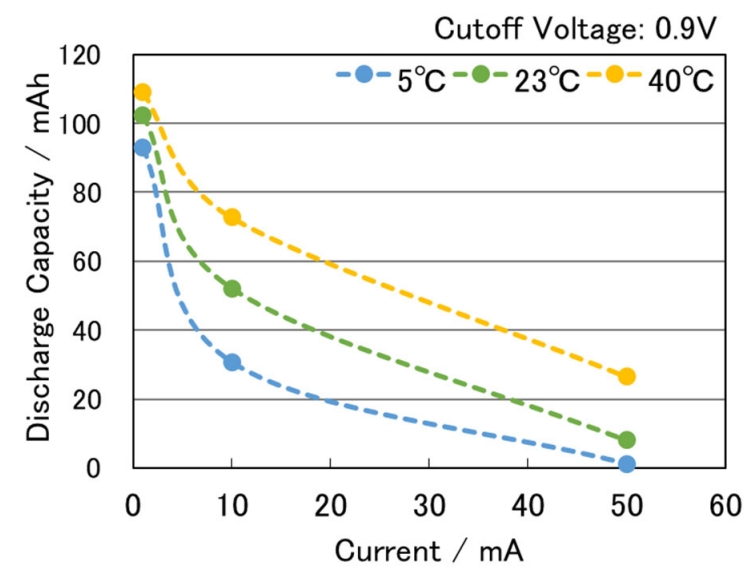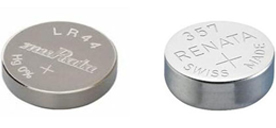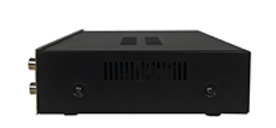Interpreting LR43 Batteries: Functions, Applications and Equivalent Batteries
2024/5/8 16:44:11
Views:
In the world of compact power, the LR43 battery shines as a reliable 1.5-volt alkaline button cell, widely used in various small devices. It is a well-liked option for watches, calculators, and other small electronic devices that need a reliable power source because of its small size and strong energy.
Introduction
LR43 is a type of button cell battery. It goes by a number of other names as well, including 186 and AG12. LR43 batteries are small, cylindrical batteries with a diameter of 11.6mm and a height of 4.2mm. They are frequently found in tiny electronic gadgets that need a portable power supply, like watches, calculators, laser pointers, LED penlights, toys, and other devices. LR43 batteries are alkaline batteries with a nominal voltage of 1.5 volts and a typical capacity of around 85mAh. Their shelf life is two to three years, and they are not rechargeable. Batteries marked LR43 can be used in a variety of devices since they are compatible with models AG12, 186, 301, 386, and SR43W.
LR43 Battery Dimensions
LR43 Battery Key Specifications
LR43 Battery Features
The LR43 battery offers a range of features that contribute to its excellent performance and environmental friendliness.
- Cost-Effective Performance: The LR43 achieves outstanding cost performance by utilizing manganese dioxide as a cathode material. This choice enhances the battery's efficiency and longevity, providing a reliable power source at an affordable price point.
- Stable Discharge and High-Drain Pulse Characteristics: This battery delivers stable voltage output, even during high-drain pulse discharge, ensuring consistent performance in devices that require bursts of power. Devices that require rapid, high-energy bursts, such as cameras or electronic toys, benefit greatly from this capability.
- Leakage Resistance: The LR43 boasts exceptional leakage resistance, thanks to Murata's unique sealing structure and special sealing-material treatment. This design prevents electrolyte leakage, ensuring the battery's reliability and safety over its lifespan.
- Compliance with RoHS Directive/European Directives: The LR43 is environmentally friendly, complying with the RoHS Directive (Directive 2006/66/EC, 2013/56/EU). According to EC regulation values, it is free of dangerous chemicals like lead (Pb), mercury (Hg), and cadmium (Cd). To further emphasise its environmentally friendly design, the battery pack is also exempt from the RoHS directive (Directive 2011/65/EU).
- Reliable Performance: Beyond its environmental benefits, the LR43 offers reliable performance, maintaining a steady voltage output throughout its lifespan. Due to its dependability, it can be used for a variety of purposes, such as remote controls and medical equipment.
- Long Shelf Life: The LR43 has a shelf life of 2-3 years, ensuring that it remains reliable even when stored for extended periods, making it a convenient choice for stocking up on spare batteries.
- Versatile Compatibility: The 1.5V alkaline button cell LR43 is compatible with a variety of devices, including watches, calculators, and small electronic gadgets, making it a versatile option for powering various devices.
The LR43 battery's features, including its cost-effective performance, stable discharge, high-drain pulse characteristics, leakage resistance, and compliance with environmental directives, make it a reliable and environmentally friendly power source for a wide range of devices.
LR43 Battery Discharge Analysis
LR43 batteries exhibit specific discharge characteristics, which can vary based on several factors. When a load is applied, the discharge behavior can change, affecting the battery's overall performance. Additionally, temperature plays a crucial role, as it can influence the battery's ability to deliver power effectively. Understanding how these factors impact the discharge capacity of LR43 batteries is essential for maximizing their lifespan and performance in various applications.
■ Discharge Characteristics
At a load of 6.8kΩ and a temperature of 23°C, the LR43 battery exhibits stable discharge characteristics. It maintains a consistent voltage output suitable for powering low to moderate energy devices. However, for high-drain applications, it may experience a gradual voltage drop. Temperature has a minimal impact on its performance at this level, with the battery delivering reliable power output.
■ Discharge Characteristics on Load
The discharge characteristics of the LR43 battery vary depending on the load applied. At lower loads, the battery can maintain a relatively stable voltage output, making it suitable for devices with modest power requirements. However, as the load increases, the voltage output may decrease gradually. It's crucial to take into account the particular load needs of your gadget in order to guarantee the best possible performance and extended lifespan of the LR43 battery.
■ Discharge Characteristics by Temperature
The LR43 battery's discharge characteristics can be influenced by temperature. At lower temperatures, its capacity may decrease, leading to reduced runtime. Conversely, higher temperatures can increase the battery's self-discharge rate, affecting its overall lifespan. For the LR43 battery to continue performing at its best, it is crucial to use it within the recommended temperature range.
■ Discharge Load vs. Discharge Capacity
The discharge load and discharge capacity of the LR43 battery are interconnected factors that affect its performance. The discharge load, expressed in ohms, establishes the maximum current that a battery can supply to a gadget. Generally speaking, a larger load causes a faster rate of discharge and lower battery life. On the other hand, the discharge capacity of the LR43 battery, measured in milliampere-hours (mAh), indicates the total amount of energy it can deliver before becoming depleted.
When choosing an LR43 battery for a specific application, it's essential to consider both the discharge load and discharge capacity to ensure the battery can meet the device's power requirements. High-drain devices, such as digital cameras or flashlights, require a battery with a higher discharge capacity to provide sufficient power for an extended period. Conversely, low-drain devices, like remote controls or calculators, may operate efficiently with a battery that has a lower discharge capacity. Matching the battery's discharge characteristics to the device's power needs is key to optimizing performance and maximizing battery life.
LR43 Battery Key Applications
LR43 batteries are used in a variety of small electronic devices because of their small size and consistent power delivery. Typical uses for them include:
- Watches: Both analog and digital watches often use LR43 batteries. Their small size and stable voltage make them ideal for powering the timekeeping mechanisms in wristwatches and other timepieces.
- Calculators: Many small calculators, especially those with basic functions, use LR43 batteries to power their electronic components. The stable voltage and long shelf life of LR43 batteries make them suitable for calculators that are used intermittently over long periods.
- Laser Pointers: LR43 batteries are often used to power laser pointers, particularly those designed for presentations or educational purposes. The compact size of LR43 batteries allows them to fit easily into the slim design of most laser pointers.
- LED Penlights: Small LED penlights, used for tasks such as reading in low light or as a backup light source, often use LR43 batteries. The high energy density of LR43 batteries allows them to power the bright LEDs in these devices for extended periods.
- Toys: LR43 batteries are commonly used in small electronic toys, such as electronic games, musical toys, and light-up toys. The stable voltage and compact size of LR43 batteries make them suitable for use in these types of toys.
- Small Electronic Gadgets: LR43 batteries are used in a variety of other small electronic gadgets, such as keychain flashlights, remote controls, and small digital thermometers. These days, they are a popular option for powering these kinds of gadgets because of their small size and dependable performance.
LR43 batteries are valued for their compact size, stable voltage, and reliable performance, making them suitable for a wide range of applications in small electronic devices.
LR43 Battery Equivalents
The LR43 battery is interchangeable with several other battery models, including the AG12, 186, 301, 386, and SR43W. While these batteries may have minor differences in dimensions and capacity, they are functionally equivalent and can be used interchangeably in most devices that accept LR43 batteries. Here is their detailed comparison table:
LR43 vs. CR1225
When comparing the LR43 and CR1225 batteries, one of the key distinctions lies in their voltage ratings. The LR43 operates at 1.5 volts, while the CR1225 is a 3-volt battery. This fundamental difference makes them incompatible for direct replacement in devices designed for one or the other.
With a 1.5-volt rating, the LR43 is a popular component found in many small electronic gadgets, including watches, calculators, and small toys. Its lower voltage output is suited for applications where higher voltages are not required, and its compact size makes it ideal for use in these types of devices.
On the other hand, the CR1225's 3-volt rating makes it suitable for devices that require higher voltage levels or where the LR43's lower voltage output would be insufficient. Devices such as key fobs, medical devices, and some small electronics use the CR1225 for its higher voltage and longer-lasting power.
The LR43 and CR1225 are not the same in terms of size. The LR43 is a cylindrical battery measuring approximately 11.6 mm in diameter and 4.2 mm in height, while the CR1225 is a coin cell battery with a diameter of about 12.5 mm and a thickness of around 2.5 mm. This size difference means that the two batteries are not interchangeable in devices that require a specific form factor.
While both the LR43 and CR1225 are small, button cell batteries commonly used in electronic devices, their differences in voltage and size make them suitable for different types of applications. To guarantee correct operation and performance, use the battery type that the device maker specifies.
FAQs about LR43 Batteries
1. What are the dimensions of the LR43 battery?
The LR43 battery, also known as an 386A or AG12 battery, has a standard coin cell shape with dimensions typically around 11.6 mm in diameter and 4.2 mm in height. Depending on the brand and battery model, these measurements may differ slightly. To make sure something will work with your device, it's best to verify the manufacturer's requirements.
2. Can I recharge an LR43 battery?
No, LR43 batteries are not rechargeable. These are primary batteries, commonly referred to as disposable batteries, made exclusively for one use. Attempting to recharge them can be dangerous and may cause leakage, overheating, or even explosion. It's crucial to use the right kind of battery for your gadget and to dispose of dead batteries in accordance with local laws.
3. How long does an LR43 battery last?
An LR43 battery's lifespan is influenced by a number of variables, such as the device it powers, how often it is used, and how much power it needs. LR43 batteries typically have a capacity between 80 and 130 milliampere-hours.
An LR43 battery can operate for several months to a year or more in low-power devices. Nevertheless, the battery life of high-drain gadgets like digital cameras or LED lights may be limited to a few hours or days. To guarantee peak performance, it's critical to keep an eye on how well your gadget is working and to change the battery as necessary.
4. CanI replace a LR43 battery with a LR44?
It is possible to swap out an LR43 battery for an LR44 battery in many situations. Both batteries are alkaline button cell batteries with similar dimensions, but the LR44 is slightly larger in diameter and height than the LR43. Another name for the LR44 battery is an AG13 or 357 battery.
Because of the difference in size, the LR44 battery may not fit in devices designed specifically for the LR43. However, if the device has enough space to accommodate the slightly larger LR44 battery, it can be used as a replacement. Before switching out a battery type for another, it's advisable to review the manufacturer's recommendations and the specs of your device.
5. Are LR43 batteries environmentally friendly?
Like most button cell batteries, LR43 batteries include chemicals that, if improperly disposed of, could harm the environment. These batteries usually contain corrosive electrolytes together with metals like zinc, manganese dioxide, and lithium.
It's crucial to dispose of LR43 batteries at approved recycling facilities or via programmes that manage hazardous waste if you want to reduce your environmental effect. Recycling helps recover valuable metals and reduces the potential for environmental contamination. Avoid disposing of LR43 batteries in regular household waste where they can end up in landfills and potentially leak harmful substances into the soil and water.
6. Are LR43 batteries safe to use?
LR43 batteries are considered safe for general use when handled properly. However, like all batteries, they can pose risks if misused or abused. Here are some safety tips for using LR43 batteries:
- Keep out of reach of children: Small button cell batteries like the LR43 can be a choking hazard for young children. Ensure that children cannot easily access them.
- Avoid swallowing: Ingesting a button cell battery can be exceedingly hazardous and necessitate prompt medical intervention. Keep batteries away from your mouth and ensure they are not accessible to small children or pets.
- Proper disposal: Dispose of used LR43 batteries properly at designated recycling centers or through hazardous waste disposal programs. Don't put them in the usual trash for your home.
- Prevent short circuiting: Keep the positive and negative terminals separate from one another and from metal objects to avoid the battery overheating or leaking.
- Appropriate storage: Keep LR43 batteries out of direct sunlight and extremely hot or cold environments for maximum longevity.
You may use LR43 batteries safely and reduce the hazards involved in their use by paying attention to these safety precautions.
7. How should LR43 batteries be disposed of?
It is important to dispose of LR43 batteries correctly to reduce any potential harm to the environment. Since LR43 batteries contain chemicals that can be hazardous if not handled correctly, it's important to follow these guidelines for disposal:
- Recycling: The best way to dispose of LR43 batteries is to recycle them. Many communities have programs or facilities that accept household batteries for recycling. For information on how to recycle LR43 batteries in your region, get in touch with the municipality or recycling centre nearby.
- Hazardous waste disposal: If recycling isn't an option, dispose of LR43 batteries using programmes designed to handle hazardous waste. For advice on how to properly dispose of hazardous trash from your home, get in touch with your local waste management authority.
- Prevent landfill disposal: Do not put LR43 batteries in the same garbage as other household items. Hazardous chemical leaks can occur from batteries in landfills.
- Store used LR43 batteries apart from other rubbish until you are ready to get rid of them appropriately. This lessens the chance of unintentional harm or leaks.
- Safety advice: Wear gloves when handling used LR43 batteries to shield your skin from any possible leaks. After handling the batteries, make sure to properly wash your hands and refrain from touching your mouth or face.
You may reduce the environmental impact of disposing of LR43 batteries by adhering to these rules and ensuring that they are disposed of properly and ethically.
8. What is the shelf life of an LR43 battery?
An LR43 battery's shelf life can change based on the manufacturer and storage circumstances. In general, LR43 batteries have a shelf life of around 3 to 5 years if stored properly.
It's crucial to keep LR43 batteries out of direct sunlight and extremely hot or cold environments in order to extend their shelf life. Batteries may be kept more damage-free and have a longer shelf life if they are stored in their original container.
Always check the expiration date on the packaging before purchasing LR43 batteries and use the oldest batteries first to ensure they are used before their shelf life expires.
9. Are LR43 batteries safe to use in various environments, including extreme temperatures?
LR43 batteries are generally safe to use in a variety of environments, including those with moderate temperature fluctuations. However, like all batteries, their performance can be affected by extreme temperatures.
- High Temperatures: Exposing LR43 batteries to high temperatures can shorten their lifespan and cause them to leak or rupture. The ideal location for LR43 battery storage is away from heat sources and direct sunshine, somewhere dry and cold.
- Low Temperatures: In cold environments, the performance of LR43 batteries may temporarily decrease. They may not deliver full power until they warm up to a more optimal operating temperature.
- Moisture: LR43 batteries should be kept dry, as moisture can lead to corrosion and potentially cause the battery to malfunction.
When utilising LR43 batteries at extremely high or low temperatures, it's critical to keep an eye on their performance and swap them out if leaks, swelling, or other anomalies are noticed. If you're unsure about using LR43 batteries in a specific environment, consult the manufacturer's recommendations or consider using batteries rated for a wider temperature range.
10. What are some signs that an LR43 battery needs to be replaced?
Several signs indicate that an LR43 battery may need to be replaced:
- Diminished Power: If the device powered by the LR43 battery starts to operate at a lower power level than usual, it may be a sign that the battery is running out of power and needs replacement.
- Intermittent Operation: The device may turn on and off intermittently or exhibit erratic behavior when the battery is low and needs replacement.
- Low Battery Warning: Some devices may have a low battery indicator that alerts you when the battery needs to be replaced.
- Leakage: If you notice any leakage or corrosion on the battery or inside the device, the LR43 battery should be replaced immediately to prevent damage to the device.
- Physical Damage: Any physical damage to the battery, such as swelling, cracks, or leakage, indicates that the battery is no longer safe to use and should be replaced.
- Expiration Date: LR43 batteries, like all batteries, have a limited lifespan and may lose their charge over time, even if not used. Check the date on the battery and replace it if needed.
If you observe any of these signs, it's recommended to replace the LR43 battery with a new one to ensure optimal performance and prevent damage to the device.
11. Where can LR43 batteries be purchased?
There are several places to get LR43 batteries, including icwhale.com and other internet merchants. The following are some typical locations for LR43 battery purchases:
- Online Retailers: Websites such as icwhale.com offer a convenient way to purchase LR43 batteries from the comfort of your home. These online platforms often provide a wide selection of battery brands and quantities to choose from.
- Electronics Stores: Retailers specializing in electronics, such as Best Buy, Fry's Electronics, and RadioShack, typically carry LR43 batteries in their stores. These stores may also offer online purchasing options for added convenience.
- Pharmacy and Convenience Stores: Many pharmacies and convenience stores stock LR43 batteries, particularly those with dedicated sections for batteries and small electronic accessories. Retailers like CVS, Walgreens, and 7-Eleven are examples of places where you might find LR43 batteries.
- Department shops: In their electronics or home goods departments, major department shops such as Walmart, Target, and Kmart frequently have LR43 batteries. These stores may also offer online ordering and in-store pickup options.
- Specialty Battery Stores: Stores specializing in batteries and power solutions, such as Batteries Plus Bulbs and Battery Mart, are reliable sources for LR43 batteries. These shops usually provide a large selection of batteries together with professional guidance.
Before making a purchase, ensure that the LR43 batteries you choose are compatible with your device and meet its power requirements. Additionally, consider factors such as brand reputation, pricing, and shipping options when selecting a retailer.
Related Information
-
-
Phone
+86 135 3401 3447 -
Whatsapp

